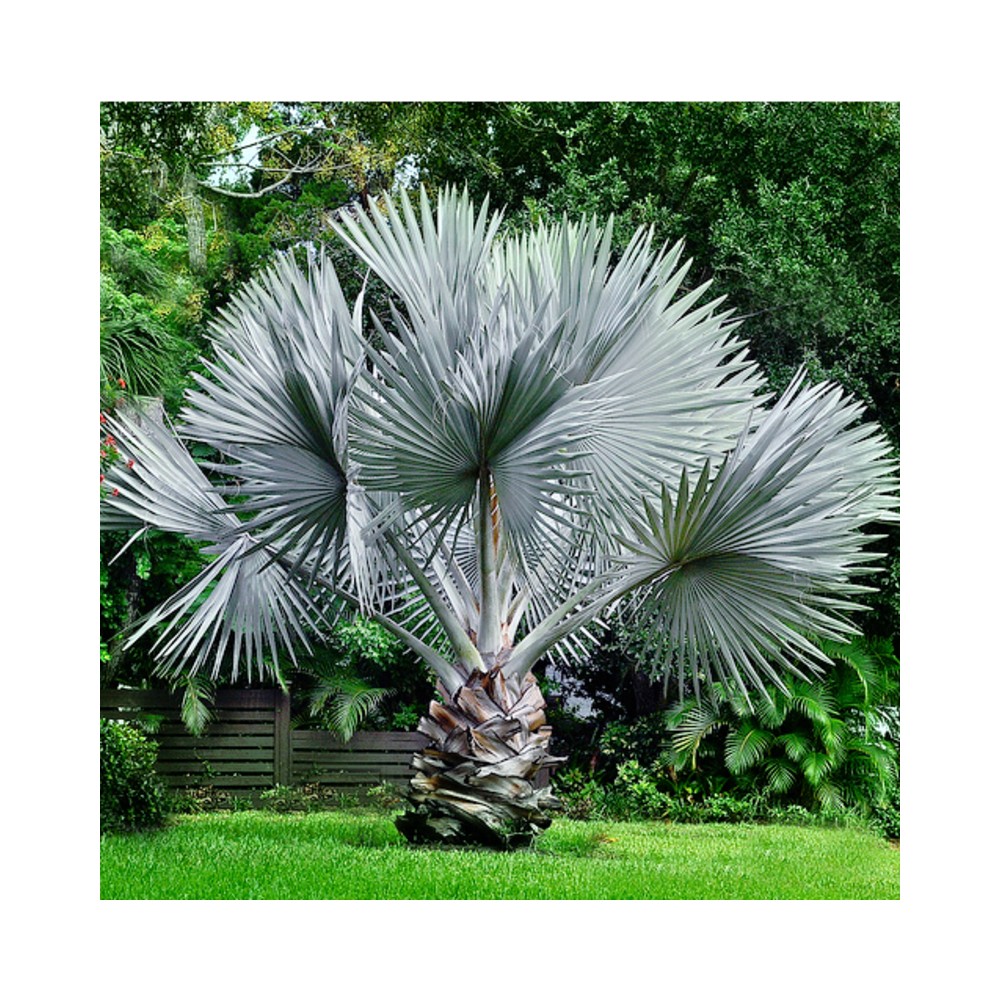



Bismarckia Palm It’s no wonder the scientific name of the exceptional Bismarck palm is Bismarckia nobilis. It’s one of the most elegant, massive and desirable fan palms you can plant. With a stout trunk and symmetrical crown, it makes a great focal point in your backyard. Planting Bismarck Palm Trees Bismarck palms are huge, gracious trees native to the island of Madagascar, off the east coast of Africa. If you are planting Bismarck palm trees, be sure that you reserve enough space

Security policy visit http://nurserynature.com/content/10-security-policy

Shipping & Delivery Policy visit http://nurserynature.com/content/1-delivery

Cancellation & Refund Policy visit http://nurserynature.com/content/6-aeu-legal-revocation-terms
Description
Bismarckia Palm It’s no wonder the scientific name of the exceptional Bismarck palm is Bismarckia nobilis. It’s one of the most elegant, massive and desirable fan palms you can plant. With a stout trunk and symmetrical crown, it makes a great focal point in your backyard. Planting Bismarck Palm Trees Bismarck palms are huge, gracious trees native to the island of Madagascar, off the east coast of Africa. If you are planting Bismarck palm trees, be sure that you reserve enough space
BismarckiaPalm Plantting Care
Each tree can grow to 60 feet high with a spread of 16 feet. In fact, everything about this attractive tree is oversized. The silvery-green copalmate leaves can grow to 4 feet wide, and it isn’t unusual to see trunks as thick as 18 inches in diameter. Experts do not recommend growing Bismarck palms in a small backyard since they tend to dominate the space. Growing Bismarck palms is easiest in U.S. Department of Agriculture plant hardiness zones 10 through 11, since the species can be damaged by freezing temperatures. Bismarck palm care is not difficult or time-consuming once the tree is established in an appropriate location. Growing Bismarck Palms Plant this stunning palm in full sun if you can, but you can succeed at growing Bismarck palms in partial sun too. Select a wind-protected area if possible, since these trees can be injured in windstorms. Soil type is not critical, and you’ll do fine planting Bismarck palm trees in either sand or loam. Keep an eye out for soil deficiencies. When you are trying to care for a Bismarck palm tree, you will have problems if your soil lacks potassium, magnesium or boron. If a soil test reveals a deficiency, correct it by using a controlled-release granular fertilizer of 8-2-12 plus micronutrients. Bismarck Palm Care Aside from mineral deficiencies, you won’t have much to worry about to care for a Bismarck palm tree. Irrigation is important when the palm is young, but established palms are drought tolerant. They also resist disease and pests. You can prune this palm during every season. However, only remove leaves that are completely dead. Cutting partially dead leaves attracts pests and depletes a palm’s potassium supply.
Bottles are slow growing palms that could end up about 10 feet at maturity...but maturity takes many, many years. Most specimens in the landscape average only 5 to 7 feet tall.